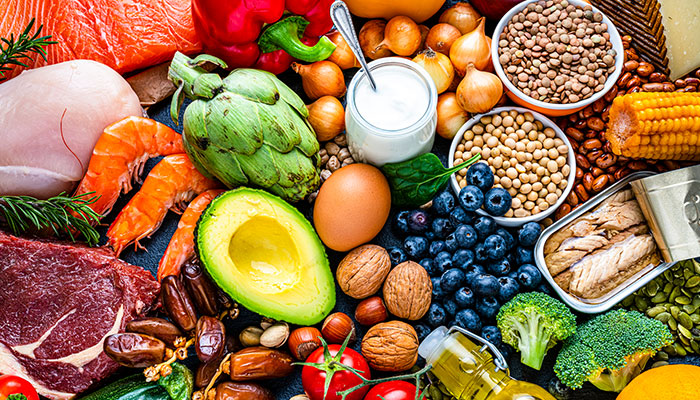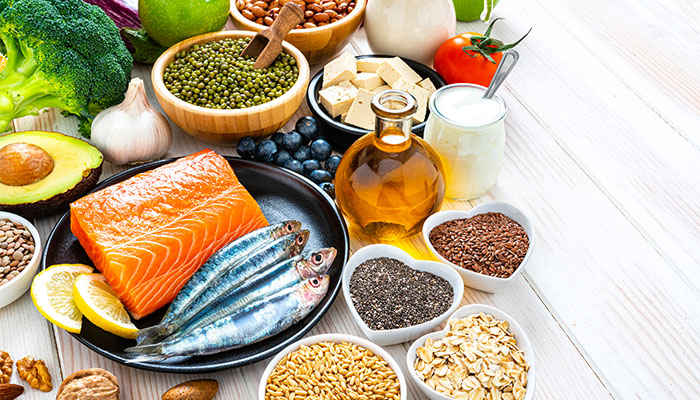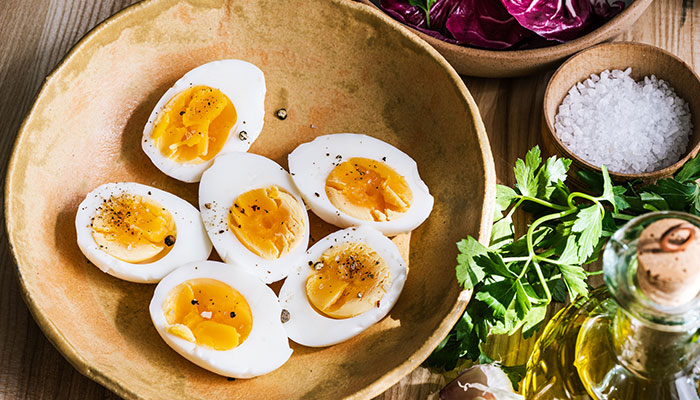People often adopt a diet or different way of eating for reasons such as health concerns or weight loss, on ethical grounds, or furthering a training regime.

Before you or a child in your care embark on a new way of eating, it is important to consult a doctor or dietitian for advice. Some diets are not suitable for people with certain medical conditions, and children have specific dietary requirements at different stages of development. Other diets may be actively dangerous for people of all ages.
Mediterranean
Rich in lean proteins, oily fish, fruit, vegetables, leafy greens, antioxidants, wholegrains, and healthy fats, and low in red meat, saturated fats and added sugars.
Pros: This is considered by many to be the perfect diet for good health and a long life. There is good scientific evidence to back up these claims, too, including reduced risk of disease including high blood pressure, heart attack, stroke, dementia, type 2 diabetes and obesity, and improved mental health.
Cons: In some areas, fresh fruit, vegetables and seafood are more difficult to buy or can be prohibitively expensive, making this sort of diet less accessible.
Vegan
A strictly plant-based diet with no animal-sourced products.
Pros: High in fibre, high in micronutrients and antioxidants, and low in energy density (making weight maintenance easier), a vegan diet is relatively affordable, accessible for most people, and ethically and environmentally sound.
Cons: Ensure you are getting enough protein, iron and vitamin D, as these are essential to bone strength and muscle development. Plant-based omega-3s may be less readily absorbed by our bodies than animal-derived omega-3s, making expensive supplements necessary. For any processed food, make sure you read the label carefully. Some vegan foods, including some imitation meats, meat substitutes and snacks, are ultra‑processed, and may be low in nutrients and fibre, and high in calories, unhealthy fats, added sugar and other additives.

Healthy formula: A good rule of thumb is that the contents of your plate should be one quarter protein, one quarter carbohydrates and half vegetables, says MQ Health dietitian Valentina Duong.
Vegetarian and pescatarian
Vegetarians eat a plant-based diet, but often with the addition of eggs and dairy products. Pescatarians add fish and/or shellfish, with or without eggs and dairy.
Pros: High in fibre, plant-based, high in micronutrients and antioxidants, low in energy density (making weight maintenance easier), relatively affordable, increased choice of protein sources, and accessible for most people. Dairy is rich in calcium and vitamin D, supporting bone health.
Cons: As with vegan diets, vegetarians need to ensure they are getting enough protein, iron and omega-3s. Eating fish can help solve this problem, but the diet becomes less affordable.
Intermittent fasting
There are different types of fasting diets, including 5:2 (five days of ‘normal’ eating and two days of restricted eating, usually in the form of low calorie intake), time-limited eating (concentrating eating in a set number of hours a day – usually 12 but sometimes only eight), and the so-called Warrior Diet (eating very little during the day, and one very large meal at night).
Pros: Time-limited eating is probably the best option so long as you don’t try to skip breakfast, as this will make you more likely to struggle with energy and concentration, then make poorer food choices when you do eat. Some people find time‑limited eating helpful for weight loss because it has the effect of reducing the total calories consumed. It is also simple in the sense that it has a set of clear rules to follow.
Cons: Intermittent fasting can be difficult to do correctly. The 5:2 diet is based on eating sensibly on your non-fasting days, as you can’t expect to correct five days of eating junk food with two of restricted calories. Options like the Warrior Diet could lead to disordered eating and should be avoided. During the day you’ll find you’re low on energy and may become hangry (hungry/angry), and when you finally do have a meal, you’re more likely to over-eat and experience a big spike in blood sugar.
Low carb
This can cover anything from cutting out all carbohydrates to reducing the amount of simple carbohydrates you consume. Carbohydrates come in many shapes and sizes, and some are better for you than others: fruit, vegetables and wholegrains are vital to your body, while simple carbohydrates like white rice, white bread and pasta are better consumed in smaller quantities. The amount of carbohydrates you need depends on factors like the amount of activity you do, so check with a dietitian before making any drastic changes.
Pros: Simple carbs tend to be high-energy foods that are often also combined with saturated fats (for example, bread, chips, chocolate and cakes), so eating these in moderation helps to regulate blood sugar and can assist with weight loss.
Cons: Complex carbohydrates help you feel sated and give you sustained energy, so cutting them from your diet is likely to leave you feeling hungry and lacking in energy.

Protein boost: Highly nutritious, eggs are an ideal addition to a plant-based diet because they are a good source of protein for people who avoid meat.
Low calorie
Low-calorie diets involve choosing foods with low energy density, like lean proteins, fruit, and vegetables, usually in combination with reducing carbohydrates. Daily calorie requirements depend on the person, taking into account build, age and activity level.
Pros: Low-calorie diets can be effective for weight loss. In general, if you maintain a calorie deficit by burning more energy than you consume, you should lose weight.
Cons: This is not a two-week fix: it requires a long-term shift in eating habits and is best combined with regular exercise. These diets can be difficult to sustain over time, and the more weight you want to lose, the longer it will take to do in a healthy, sustainable way.
Children should never be fed a raw food diet. Far from being healthier, this diet is likely to be dangerous especially if followed in the long term.
Low sugar
Like low-carb diets, this can range from simply reducing added sugars to cutting out all types of sugars. Reducing added sugars is in line with WHO advice, which recommends that no more than five per cent of daily calories come from added sugars.
Pros: Reducing added sugars in the form of soft drinks, juices, lollies, chocolate, cakes, biscuits, ice-cream and other snack foods is a good idea from a health perspective, and makes it much easier to control weight.
Cons: Foods like whole fruit, vegetables and unflavoured milk and dairy products still contain sugars, but unlike products containing added sugars, these are healthy sugars. Cutting out these types of sugars is not a good idea, as it will also cut out many nutrients your body needs. There is also a lot of joy to be had from eating the occasional brownie or slice of cake.
Ultra-low fat
As the name implies, this involves food containing any sort of fat.
Pros: Reducing unhealthy fats, like saturated fats and trans fats (think bacon, sausages, processed meats, commercial biscuits and cakes, and snack foods), is good for many aspects of our long-term health, lowering the risk of heart attack, stroke and obesity.
Cons: In order to function properly, our bodies need a certain amount of healthy fats and oils, like those found in oily fish, olive oil, nuts and seeds and avocados. Some of the key vitamins we rely on, like vitamins A, D, E and K, are fat soluble, so without some fat, we cannot absorb them. Our bodies also need fats to produce hormones, and without them, we will begin to notice symptoms like loss of sex drive, hair loss and dry skin rashes. Many processed products that are labelled as low fat substitute added sugar to make them taste better, so you may unwittingly be trading one problematic food for another.
Ketogenic (keto) and paleo
Keto is a low-carb, high-fat, high-protein diet designed to force the body into ketosis, a process that uses fat instead of glucose as the main source of energy.
Paleo is based on the idea of eating only what our ancestors would have been able to hunt or gather thousands of years ago. It is usually heavy on meat, with some vegetables, fruits, nuts and seeds, unprocessed ‘ancient’ grains, fish and eggs.
Pros: A keto diet may be useful in very specific medical circumstances, such as needing to lose weight rapidly for surgery.
Cons: While both diets may result in short-term weight loss, neither is sustainable in the long term. High intake of red meat and saturated fats can lead to high cholesterol levels and heart problems, while lack of fibre results in constipation, and low intake of fruit and vegetables means the body has fewer nutrients available to it. Keto diets can also often result in bad breath.
Raw food
Just as the name implies, this diet includes only unprocessed and raw fruits, vegetables, nuts and seeds. Proponents often follow this diet in the belief that these foods are healthier and higher in nutrients.
Pros: None.
Cons: Far from being healthier, this diet is likely to be dangerous, especially if followed in the long term. While high in fibre and some nutrients, it is extremely low in protein, amino acids and healthy fats. Children should never be fed a raw food diet.
One more thing: Girl dinner
More of a social media trend than a long-term dietary choice, the so-called ‘girl dinner’ is a collection of snack foods assembled on a plate and eaten as a meal. If you’ve ever had crackers, cheese and olives instead of cooking, then you’ve had girl dinner.

Fresh is best: popular on social media, the so-called ‘girl’ dinner can be a healthy choice if you avoid highly processed and high-sugar foods.
Pros: It’s quick and easy after a long day, and if you choose snacks like vegetable sticks, cherry tomatoes, low-fat hummus, a hard-boiled egg or a piece of cheese, some unsalted nuts and a handful of blueberries, then it can be healthy and balanced too.
Cons: Beware, as not all girl dinners are created equal. Many snack foods – even the ones that claim to be low-fat or high protein – are often ultra-processed and high in sugar.
The diet bottom line
No matter which way of eating you choose, these five tips should set you on your way:
- Eat three balanced meals a day. A good rule of thumb is that the contents of your plate should be one quarter protein, one quarter carbohydrates and half vegetables.
- Aim for five serves of vegetables and two pieces of fruit a day.
- Choose small serves of lean protein. If you eat red meat, limit it to twice a week.
- Avoid saturated fats, trans fats, processed meats and limit added sugar.
- Choose wholegrains over processed carbohydrates like white bread, processed cereal, pasta and white rice.
Valentina Duong is an Accredited Practising Dietitian at MQ Health, specialising in weight management and sports nutrition.








